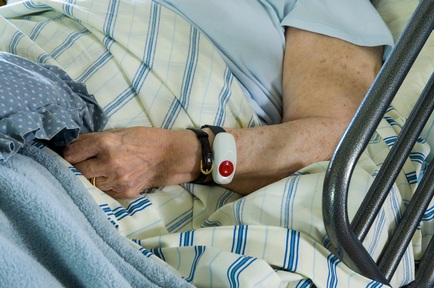CQC report shows all healthcare sectors feeling impact of increasing dementia care problems
Poor dementia care and avoidable hospital admissions are the two key failings raised by the latest CQC ‘State of Care’ report.
Results show social care services, hospitals and care homes alike are all affected by an increasing number of people diagnosed with the condition, with the knock-on effects of poor care proving the culprit in holding services back.
The regulator’s fourth annual report estimates that, over the last year in England, more than half a million people aged 65 and over were admitted to hospital emergency wards for issues that could have been dealt with by better care.
Alarmingly, the CQC also finds no significant improvement in the dignity and respect of patients when receiving NHS treatments, suggesting a lack of drive amongst NHS services to restore public faith despite the revelations of the Mid Staffordshire NHS Foundation Trust.
Amongst home care providers, the report highlights the negative impact that late and missed calls can have on other services, as well as leaving vulnerable adults feeling undervalued. While amongst care homes the regulator still finds medication management to be a significant issue, together with a tendency in some facilities to overlook risk assessments.

Chief executive of the CQC, David Behan, believes that most of the problems detailed in the report can be solved by better service integration.
He comments: “Those responsible for care in local areas need to work together quickly to address the number of avoidable emergency admissions to hospital.
“GPs, care homes, home care agencies, community health services and hospitals, with local commissioners, must plan effectively make sure our older and more vulnerable people are cared for in the way they deserve.
“Where care can be provided for people outside of hospitals, it is better for them and eases pressures on hospital services.”
Mr Behan stresses that there are no impossible barriers to overcome in order to transform those services performing poorly, concluding: “However, this year’s State of Care also shows we found examples of excellent care and I urge struggling providers to learn from their successful counterparts.”
Concerning hospital admissions, the regulator judges those to be ‘avoidable’ that relate to poor care and should otherwise be ‘manageable, treatable and preventable’, examples of which include pressure sores, bone fractures and dehydration.

Another reality that the ‘State of Care’ report highlights is the amount of regional variations for older people admissions throughout England. However it turns out that regions with a higher proportion of older people, such as the South West, have less problems, which the CQC puts down to a greater awareness amongst health services and professionals concerning the needs of the older population. In comparison, figures for the North East show the poorest performance.
carehome.co.uk director Davina Ludlow, comments: “The CQC’s report recognises the vast majority of care homes are meeting or exceeding required standards.
“While more can be done to improve the quality of care, the findings confirm that this is the exception rather than the rule.
“The sector needs to promote more of its excellent work, reminding people that fantastic care is provided to thousands of people every day.”
Alzheimer's Society head of policy & public affairs, George McNamara, also comments: “It is a national disgrace that people with dementia are being let down so profoundly. With a quarter of people in hospitals and 80 per cent of people in care homes living with dementia, caring for them should be core business of health and care services. These findings should be a wakeup call to leaders in the NHS to make dementia their number one priority and ensure that staff have the time and skills to care for people with dementia.
“People with dementia need better support in the community to reduce avoidable admissions and readmission rates.”
Latest News Analysis
 04-Sep-19
Extra £1.5 billion announced for social care in Chancellor's Spending Review
04-Sep-19
Extra £1.5 billion announced for social care in Chancellor's Spending Review
 02-Jul-19
Department of Health forced to rethink care homes' nursing rates after legal challenge
02-Jul-19
Department of Health forced to rethink care homes' nursing rates after legal challenge
 18-Jun-19
Overnight care workers forced to sleep in offices and told 'bring your own bedding'
18-Jun-19
Overnight care workers forced to sleep in offices and told 'bring your own bedding'
 14-Jun-19
Back in the closet: Third of care home staff have had no LGBT+ awareness training
14-Jun-19
Back in the closet: Third of care home staff have had no LGBT+ awareness training
 11-Jun-19
PM candidates on social care: Rory Stewart calls fixing care an 'unfinished revolution'
11-Jun-19
PM candidates on social care: Rory Stewart calls fixing care an 'unfinished revolution'